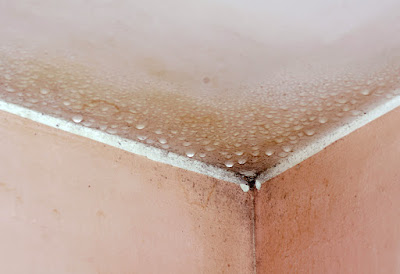The Toxic Black Mold Myth Debunked
Have you heard the term "toxic black mold"? Ooh...scary, right? Unfortunately, this is one of the most common myths revolving around mold. There's actually no scientific evidence to the term "toxic black mold." It's just a term made up by the media to exaggerate the reality of mold growth. (Not that it's good by any means.) The truth is, that while there is "black mold", 20,000 different species in fact, Stachybotrys, the “toxic black mold” of most concern, is not always toxic. Keep reading to learn more about this mold myth from Catalyst Mold Solutions.
Scientifically, there's no mold genera or species that is called "black mold" or "toxic black mold." As mentioned before, there are approximately 20,000 species of mold that are black in color. Stachybotrys, the species of "black mold" of most concern, is not always toxic. Most species of mold actually appear green, brown, orange, white or even pink. Using the color of mold to determine it's toxicity is a bad idea, as mold of any color can actually be "toxic" under the right conditions. While some molds can produce toxins, specifically mycotoxins (secondary metabolites produced by micro fungi that are capable of causing disease and death), the molds themselves are not actually toxic or poisonous.
Although all mold growth, black or not, is capable of producing mycotoxins (which are harmful to human health), none produce mycotoxins all the time. In order for mycotoxins to be produced, certain conditions have to be met simultaneously. First, the mold must be "eating" and producing secondary metabolites. Secondly, the mold must be in the presence of competing bacteria. If both these conditions are not met, then mycotoxins will not be produced. Contrary to popular belief, mycotoxins are not some mysterious substance like radiation, they don't stick to contents and they also can't be killed because they aren't alive. In addition, mycotoxins aren't the only thing to be concerned with. Mold growth can also emit gases of a VOC (volatile organic compound). VOCs include a variety of chemicals, some of which may have short-term and/or long-term adverse health effects. These gases are actually more common than the particles containing the mycotoxins.
The truth of the matter is, if you have any type of mold in your home, black or not, you'll want to call in a professional to get rid of it. You don't want to risk the health of your family or pets, or the structural integrity of your home. Our Florida mold remediation company is here for all your mold needs, from testing to removal and prevention. We are your permanent solution to mold, whether it's "toxic black mold" or not. Give us a call at 866-343-6653 for an estimate.
Toxic Black Mold
Scientifically, there's no mold genera or species that is called "black mold" or "toxic black mold." As mentioned before, there are approximately 20,000 species of mold that are black in color. Stachybotrys, the species of "black mold" of most concern, is not always toxic. Most species of mold actually appear green, brown, orange, white or even pink. Using the color of mold to determine it's toxicity is a bad idea, as mold of any color can actually be "toxic" under the right conditions. While some molds can produce toxins, specifically mycotoxins (secondary metabolites produced by micro fungi that are capable of causing disease and death), the molds themselves are not actually toxic or poisonous.
 The Role of Mycotoxins
The Role of Mycotoxins
Although all mold growth, black or not, is capable of producing mycotoxins (which are harmful to human health), none produce mycotoxins all the time. In order for mycotoxins to be produced, certain conditions have to be met simultaneously. First, the mold must be "eating" and producing secondary metabolites. Secondly, the mold must be in the presence of competing bacteria. If both these conditions are not met, then mycotoxins will not be produced. Contrary to popular belief, mycotoxins are not some mysterious substance like radiation, they don't stick to contents and they also can't be killed because they aren't alive. In addition, mycotoxins aren't the only thing to be concerned with. Mold growth can also emit gases of a VOC (volatile organic compound). VOCs include a variety of chemicals, some of which may have short-term and/or long-term adverse health effects. These gases are actually more common than the particles containing the mycotoxins.
The truth of the matter is, if you have any type of mold in your home, black or not, you'll want to call in a professional to get rid of it. You don't want to risk the health of your family or pets, or the structural integrity of your home. Our Florida mold remediation company is here for all your mold needs, from testing to removal and prevention. We are your permanent solution to mold, whether it's "toxic black mold" or not. Give us a call at 866-343-6653 for an estimate.
Catalyst Mold Solutions: Your Permanent Solution to Mold!
Catalyst Mold Solutions
1217 Cape Coral Parkway East
Cape Coral, FL 33904
Phone: 866-343-6653






Comments
Post a Comment